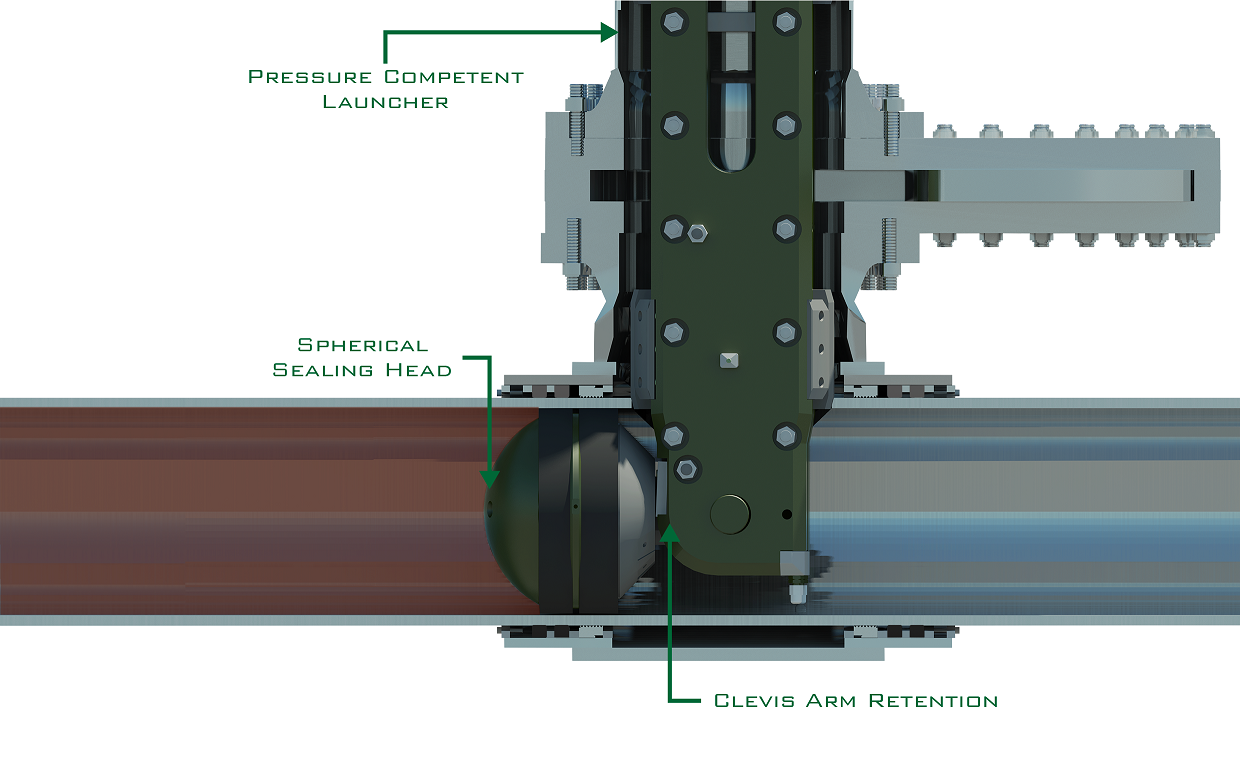November 2016, Vol. 243, No. 11
Features
High-Pressure CO-2 Pipeline Isolation Breaks New Ground

Pipeline engineering specialist STATS Group completed the world’s first leak-tight double block and bleed isolation of a high-pressure CO-2 pipeline system.
The project, on behalf of Kinder Morgan, was part of a pipeline intervention and isolation operation on a high-pressure, 30-inch carbon dioxide pipeline extending over 500 miles from southwestern Colorado to Denver City and operating at 2,140 psi.
The primary thrust of the project, which took place as part of a larger initiative to convert a non-piggable pipeline into a piggable pipeline, was to install full-bore inline valves and retrofit pigging launchers and receivers into the pipeline system. The installation of a 24-inch bypass pipeline around the isolated section allowed for continuous production and avoided system downtime during maintenance activities.
Headquartered in Kintore, Aberdeenshire, STATS Group is a pioneer of fail-safe double block and bleed isolation of pipelines using its patented BISEP™ technology. The equipment provides leak-tight isolation, increases safety over traditional line-stop technology and does not require additional hot-tap vents or bleed ports. The BISEP™ contains dual-energized seals and the annulus zero-energy zone proves and monitors the seal integrity before and during intervention work.
All equipment used on the project was designed, manufactured, assembled and tested at STATS Group’s facility in Houston.
While the pipeline operated under normal conditions, the site contractor excavated the pipeline and welded on split tee fittings, based on qualified and approved in-service welding procedures. Two 30-inch fittings provided access for the equipment, enabling mid-line isolation, while two additional 24-inch fittings allowed production to continue around the isolated section through a bypass line.
High-pressure slab valves supplied by STATS were installed on each fitting, and its technicians subsequently leak-tested and hot-tapped the pipeline at each location, successfully breaking containment and retrieving the pipeline coupons.
The 24-inch bypass line was then installed, purged and leak-tested, allowing the slab valves to be opened and flow to pass into the bypass line. The BISEPs™ were installed onto the 30-inch fittings, while the upstream double block and bleed isolation tools were deployed into the flowing pipeline.
The downstream tool was then installed and set in the pipeline, creating a mid-line isolation and diverting the flow through the 24-inch bypass line. The section of pipeline between the tools was vented in a controlled manner to a safe location, allowing the seals to be tested and verified.
Both primary and secondary seals were pressure-tested with full pipeline pressure in the correct direction, and the annulus between the seals was vented to ambient. After secondary and primary seal tests, the isolation certificate was issued. The BISEP™ annulus provided a zero-energy zone between the seals which is monitored for the duration of the isolation.
“Hot tapping and isolating liquid and gas pipelines has a long and successful track record globally; however, this is the first time the isolation of high-pressure CO-2 pipelines has been attempted due to a number of challenges, which we overcame,” said Steve Rawlinson, STATS Group vice president Americas.
The formation of solid CO-2 in the BISEP™, in addition to the ductility issues associated with its low temperature (less than -57°C), would be a problem due to the possibility of interrupting the integrated pressure communication connections used to monitor the seal annulus and performance of the tool.
The problems associated with venting liquid CO-2 to atmospheric pressure apply equally to any unintended leaks of CO-2; for example, a small leak of liquid CO-2 across the primary seal would cause temperature reduction which could further affect the integrity of the elastomeric seal and the steel components which support it. These problems were dealt with by management of CO-2 pressure. The blowdown speed of the isolated section of pipe could be controlled such that the temperature remained above design limits of the seal and the steel selection.
With maintenance work completed and the isolation no longer required, pressure was equalized between the BISEPs™ and the tools were hydraulically unset and recovered into the launchers and the slab valves closed.
STATS said it has carried out isolations at four sites along the CO-2 pipeline operating at about 2,000 psi and has completed in excess of 160 days of individual BISEP isolation. This has been accomplished while avoiding system downtime during critical maintenance activities. Throughout the isolations there has been no degradation of the seals or leaks past the primary barrier, allowing the critical launcher and receiver upgrades to occur safely and without any uncontrolled release of pipeline product.
Isolating pipelines for maintenance activities or emergencies is a high-risk but necessary activity for pipeline operators of low- and high-pressure liquid, gas and petrochemical pipeline systems. Loss of control of hazardous energy into a work site is a serious and potentially fatal event.





Comments